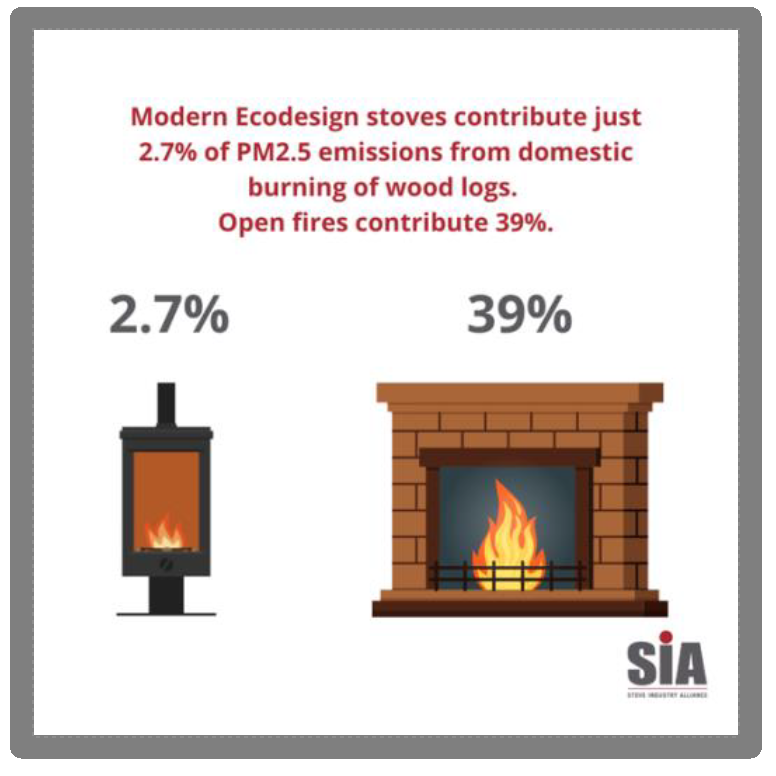Domestic burning has come under much scrutiny in recent times. As society focuses more than ever on being carbon neutral, being sustainable and actively lowering pollution, the burning of solid fuel has become somewhat of a scapegoat.
This isn’t to say the burning of solid fuel isn’t bad. The burning of coal, making bonfires, lighting open fires and burning unseasoned wood all contribute to the problem of pollution and excessive emissions. However, among these bad methods are some very green, sustainable ways to burn solid fuel.
Sadly this broad-brush, one size fits all approach has sadly led to a number of misleading and shocking statements thrown around in the media.
Misleading Statements such as:
“Burning wood and coal in open fires and stoves makes up 38% of the UK’s primary emissions of fine particulate matter (PM2.5).”
«An Ecodesign stove will emit 750 times more pollution than an HGV vehicle.»
The Clean Air Strategy 2019 made this statement above about stoves making up 38% of the UK’s primary emissions of PM2.5. This is what triggered the negative media frenzy. Since then there have been more accurate studies including the Kantar Survey 2020 to give much more accurate modelling of emissions. This new understanding provides a better understanding of the contribution of domestic outdoor burning to PM emissions in the UK, a figure that has so far been attributed to indoor burning.

Key findings:
- Domestic burning releases 47,643 tonnes of PM2.5 a year; of this 46% comes from outdoor burning.
- Emissions from outdoor burning are 9 times higher than the current percentage (5%) attributed to outdoor burning in the 2019 National Atmospheric Emissions Inventory (NAEI).
- When analysing the relative contributions of outdoor burning to indoor burning for just wood fuels (assuming the banning of house coal and wet wood), outdoor wood burning was found to account for 51% of all domestic wood burning PM2.5 emissions.
- Green waste, waste wood and rubbish combined account for 90% of all outdoor burning emissions.
- Outdoor burning sources emit at ground level with no chimney to provide dispersal at height.
Furthermore, findings highlight…
- Outdoor burning produces no useful heat where correctly seasoned wood on an ecodesign stove used indoors provides a low carbon heating option.
- Ecodesign stoves contrubute 2.7% of PM2.5 emssions from burning wood logs, despite using 9% of the fuel.
- Open fires contribute 39% of emissions, using 26% of the wood.

What things we should really be considering:
The time has come to allow the public to get a better understanding of how environmentally friendly Ecodesign stoves are, and how there is a significant difference between different solid fuel burning methods. Action should be taken on tackling bonfires, found to be a major source of PM2.5 and more research is needed into emissions factors from green waste burning.
You can learn more about our Ecodesign range of fires here.